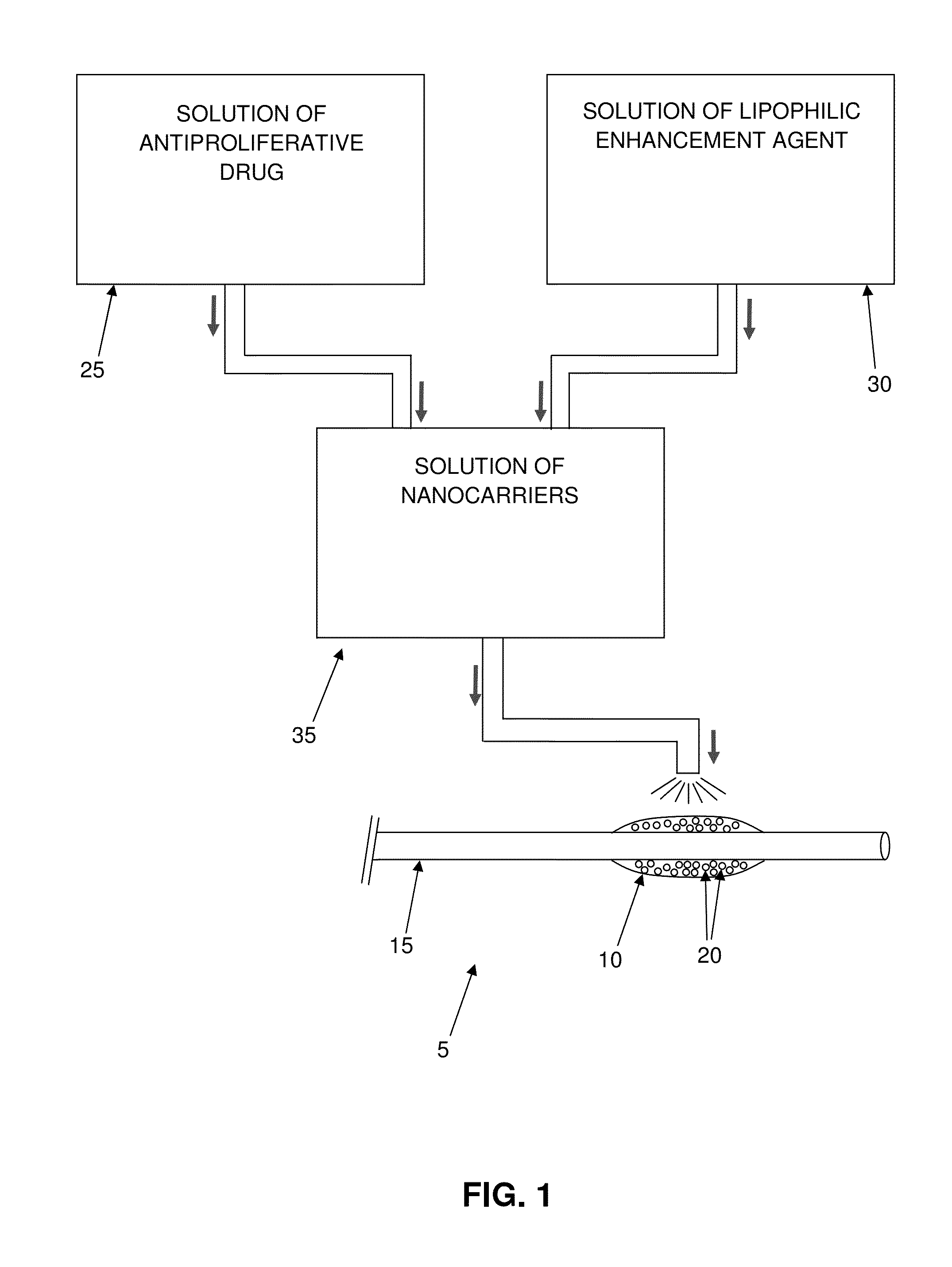Insertable medical device for delivering nano-carriers of mitomycin (and its analogues) to a target site, and methods for preparing and using the same
- Summary
- Abstract
- Description
- Claims
- Application Information
AI Technical Summary
Benefits of technology
Problems solved by technology
Method used
Image
Examples
Embodiment Construction
[0027]Before describing in detail preferred embodiments that are provided in accordance with the present invention, it should be observed that the embodiments reside primarily in the combination of a drug-releasing insertable medical device coated with encapsulated nano-carriers of an antiproliferative drug. Accordingly, the various components and method steps described herein include only those specific details that are pertinent to understanding the embodiments of the present invention so as to not obscure the disclosure with details that will be readily apparent to those of ordinary skill in the art having the benefit of the description contained herein.
[0028]In this document, the terms “comprises”, “comprising” and / or any other variation thereof are intended to constitute a non-exclusive inclusion, such that a process, method, article or apparatus that “comprises” a list of elements includes not only those elements recited, but may also include other elements not expressly state...
PUM
| Property | Measurement | Unit |
|---|---|---|
| Water solubility | aaaaa | aaaaa |
| Solution | aaaaa | aaaaa |
| Lipophilicity | aaaaa | aaaaa |
Abstract
Description
Claims
Application Information
 Login to View More
Login to View More - R&D
- Intellectual Property
- Life Sciences
- Materials
- Tech Scout
- Unparalleled Data Quality
- Higher Quality Content
- 60% Fewer Hallucinations
Browse by: Latest US Patents, China's latest patents, Technical Efficacy Thesaurus, Application Domain, Technology Topic, Popular Technical Reports.
© 2025 PatSnap. All rights reserved.Legal|Privacy policy|Modern Slavery Act Transparency Statement|Sitemap|About US| Contact US: help@patsnap.com


